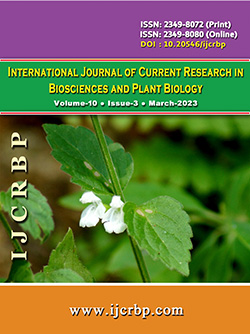 |
Online ISSN : 2349-8080 Issues : 12 per year Publisher : Excellent Publishers Email : editorinchiefijcrbp@gmail.com |
Medicinal plants are the part of human Society to combat many disorders. The plant derived drugs and other herbal therapeutics are widely used against several malfunctions. Other than medicinal herbs, mistletoe–hemi parasitic plants are also used to treat many diseases. Usually, mistletoe family is recognized based on their host plants. Loranthaceae, the largest family in the order Santalales with 76 genera and more than 1,100 species. Most of the Loranthaceae family members are aerial parasites. Family comprises of 10 genera and 60 species which are found in India. It has been scientifically established that every part of these plants has medicinal properties (flower, stem, leaf, fruits, seed and whole plants). Only a few species are having potential traditional medicinal values and extensively used in several medicinal systems. Dendrophthoe falcata holds the major part in this taxon. This species shows traditional medicinal values in Indian Ayurvedic system of medicine and other systems of natural medicine widely. There are many biologically active components present in the parasitic plants, flavonoid, quercetin, kaempferol, rutin, tannins, β- sitosterol, stigmasterol, β- amyrin and oleanolic acid. Dendrophthoe falcata was rich in flavonoids and quercetin and the major components are reportedly present in the leaves. Quercitrin (quercetin 3-0-α- rhamnoside) has been separately isolated as a major component from the ethanolic extract of Dendrophthoe falcata leaves and this quercitrin phytochemical is highly responsible for antioxidative potency. Nanoparticles phytosynthesized from these plants are also studied for their pharmacological activities. It has been revealed that the medicinal properties of mistletoes based on host plants are scanty.
